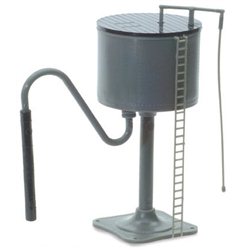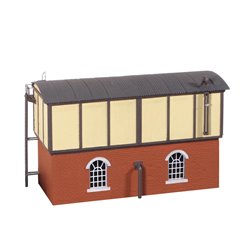Static grass puffer bottles work by manually charging model grass fibres with static electricity. When the charged...
No products
Product successfully added to your shopping cart
There are 0 items in your cart. There is 1 item in your cart.
Search Tips
Where would I typically locate a water tower on my layout?
A water tower is an essential feature of any model railway layout, as it serves a practical purpose in the real world. It provides a source of water for steam locomotives, allowing them to replenish their water supply during their journeys. As such, the inclusion of a water tower adds significantly to the realism of a layout. When it comes to locating a water tower on a layout, there are a few factors to consider.
- Proximity to the engine shed : traditionally, water towers were often located near the engine sheds or locomotive servicing areas. This allowed for easy access to water when the locomotives needed to be refilled. Placing a water tower in close proximity to the engine shed will add a touch of realism to any layout.
- Along the mainline : another common location for a water tower is along the mainline. This allows locomotives to refill their water supply without the need to deviate from their route. Placing the water tower strategically along the mainline can create interesting operational possibilities, such as scheduling water stops for steam locomotives.
- Near a station : water towers were often located near stations, as this allowed for convenient refilling of locomotives while passengers and freight were being loaded or unloaded. Placing a water tower near a station will inevitably add visual interest and realism to a layout.
- Scenic locations : water towers can also be placed in scenic areas of a layout, such as near a river, lake or in a rural setting. This can create a picturesque scene and add to the overall atmosphere of the model railway.
Ultimately, the placement of a water tower on a layout is a matter of the individual modeller's personal preference and the specific requirements of the layout. Consider the operational needs of any locomotives used on the layout and from this the most practical locations for placement of a water tower can be determined. With careful consideration, a modeller can find the perfect spot for their water tower that enhances both the realism and visual appeal of the layout.
Click here to receive the tips weekly in your mailbox. You can unsubscribe at any time.










